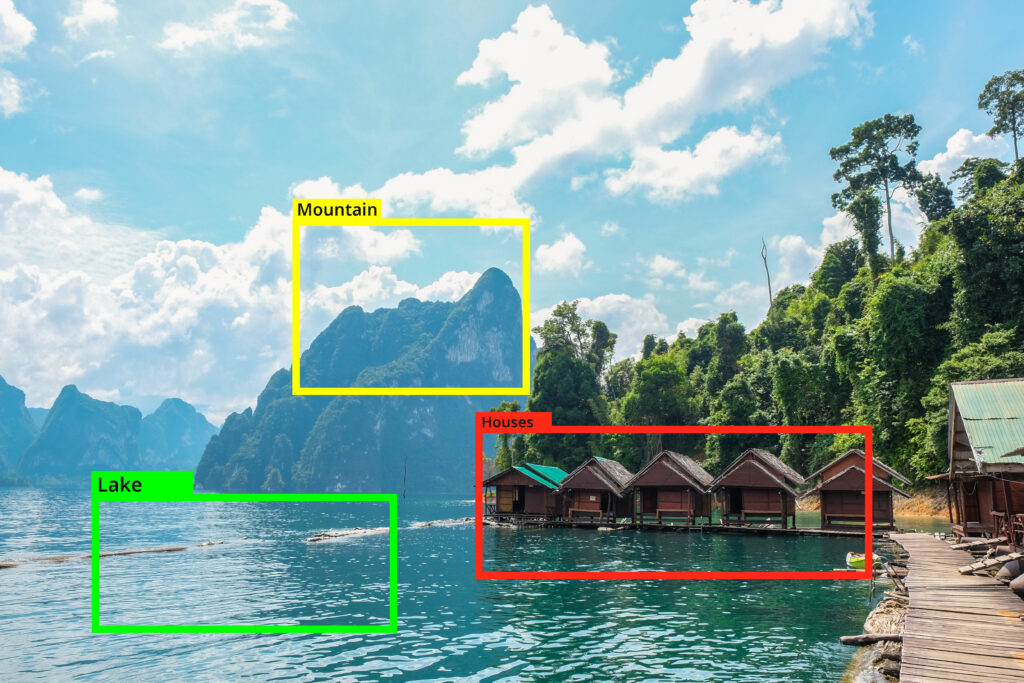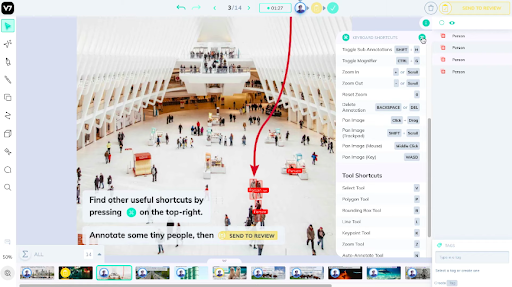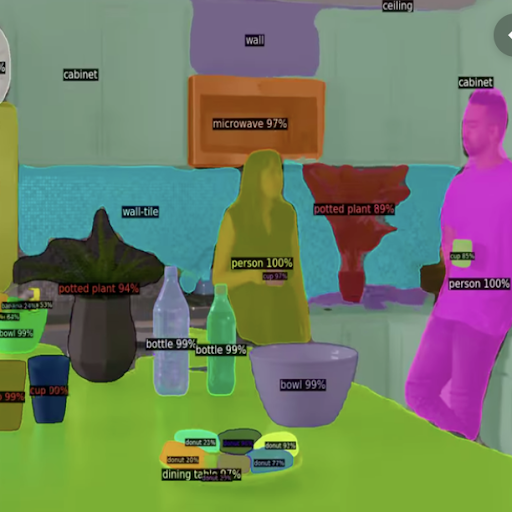
The most common types of image annotation, and a bonus newer development.
Image annotation is the process of adding labels or tags to images. It’s a manual task, but with the help of AI, automation is now more common.
This technology assists self-driving cars, where it identifies pedestrians, street signs, and other objects.
Another example of AI image annotation is in medical images and scanning probe microscopes. The AI detects histological composition of a cell, the layers of a single tooth, or even the presence of a tumor.
Many types of image annotation exist. The most common ones are object detection, image classification, semantic segmentation, and instance segmentation.
As a bonus, we introduce the newest annotation technique: panoptic segmentation.
5 Types of Image Annotation
Object Detection
Object detection involves the identification of a target object, its position, and the image annotation of that specific target.
One techniques we use for object detection is bounding box annotation.
This simply involves drawing a box around the object.
Image Classification
In image classification, the computer is taught to identify an object in an unidentified picture that resembles something known from previously labeled images.
Simply put, after labeling images of an apple and detecting its presence, the machine is now taught to recognize the specific types of apples in a basket full of apples.
This can be done using a supervised machine learning algorithm, where the classes are predetermined, and the algorithm is trained on a labeled image dataset.
Semantic Segmentation
One of the main types of image annotation is semantic segmentation. Here, machine learning starts to familiarize itself beyond the target object.
If detection and classification of a particular object have been done through a bounding box, the next step in the annotation process is to look at the more specific details around the target object.
This is where semantic segmentation comes in.
This image annotation technique is a pixel-wise annotation, where every pixel has its own annotated label.
Pixel-wise annotation plays a significant role in self-driving cars, where annotating images of their surroundings is crucial.
The image annotation types used for semantic segmentation are way more complicated than bounding boxes.
They use 3D cuboids to measure distances between two points, key point and landmarks for moving objects, and lines and splines for road signs detection.

Instance Segmentation
Compared to other types of image annotation techniques, instance segmentation includes a combination of semantic segmentation features and object detection features.
This technique detects and segments each object in an image, even if multiple objects of the same class are present.
Every instance of an object will have its unique annotation, making it easier to identify later on.
Panoptic Segmentation
Introduced in 2022, the newest image annotation technique is panoptic segmentation.
Panoptic segmentation is a combination of both semantic segmentation and instance segmentation. It also identifies things like background and unannotated objects.

In the example above, panoptic segmentation helps identify each instance in an image separately.
For example, it differentiates the cups and bottles by their labels. Additionally, it separates bowls from the donuts, so there is no confusion about the object’s identity. As a result, it is easier for computer vision to gain better situational awareness.
This technique is crucial because it allows for a more holistic image understanding, making it easier to identify objects and their relationships to one another.
Get the Best Image Annotation for Your AI Solution
AI annotation is the way of the future. However, humans must still check it in order to get the best possible and most accurate readings of your image data..
Make your data meaningful and train your algorithm free from biases with our labeling and classification services for text, speech, image, and video data.
Contact us today to learn more.
Author Bio:
Aziz Khan is a Solutions Architect at Summa Linguae Technology specializing in delivering profitable solutions for clients.
When Aziz is not working, he spends time in the gym, researching technology, and working on his blog.


